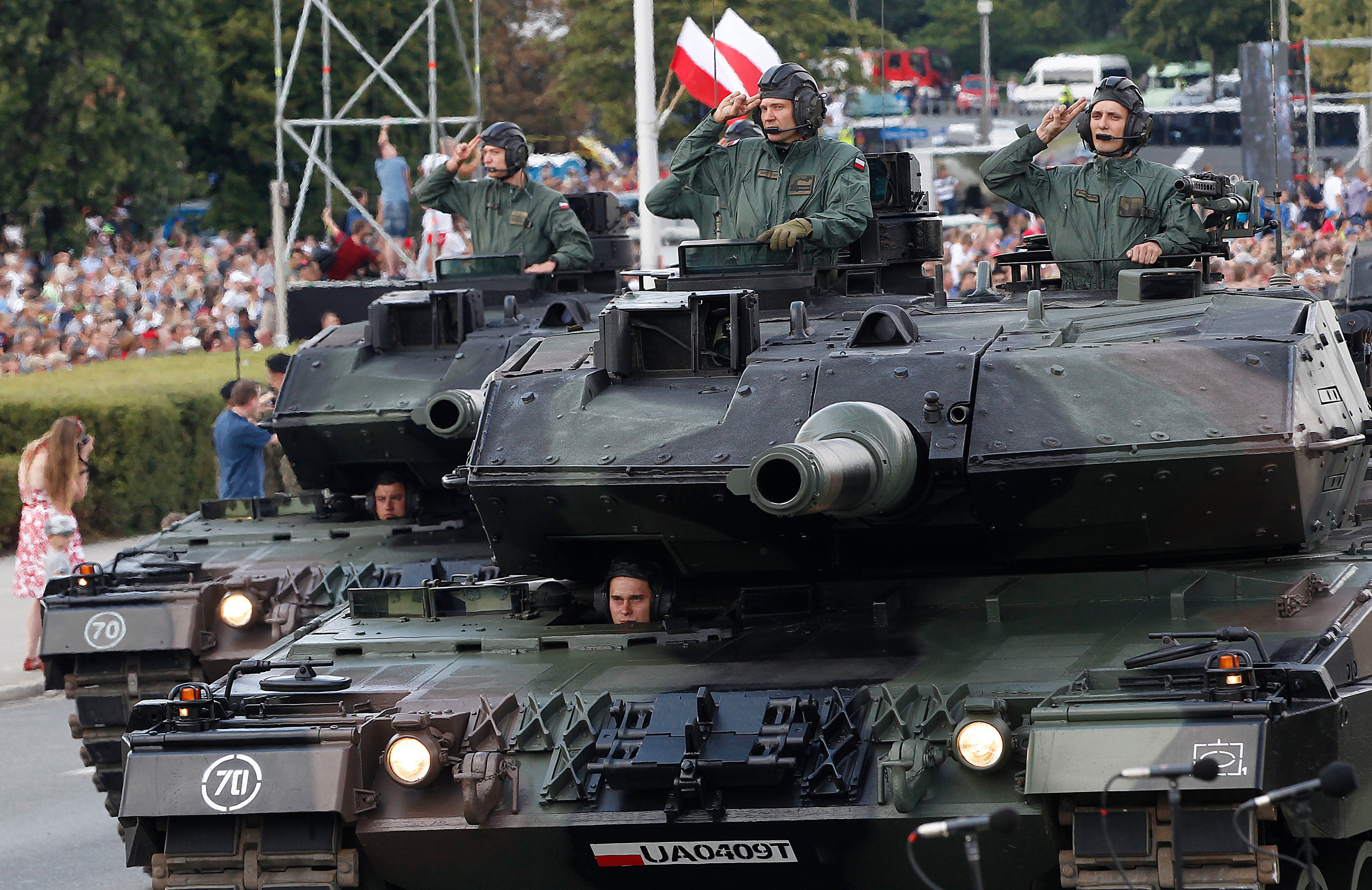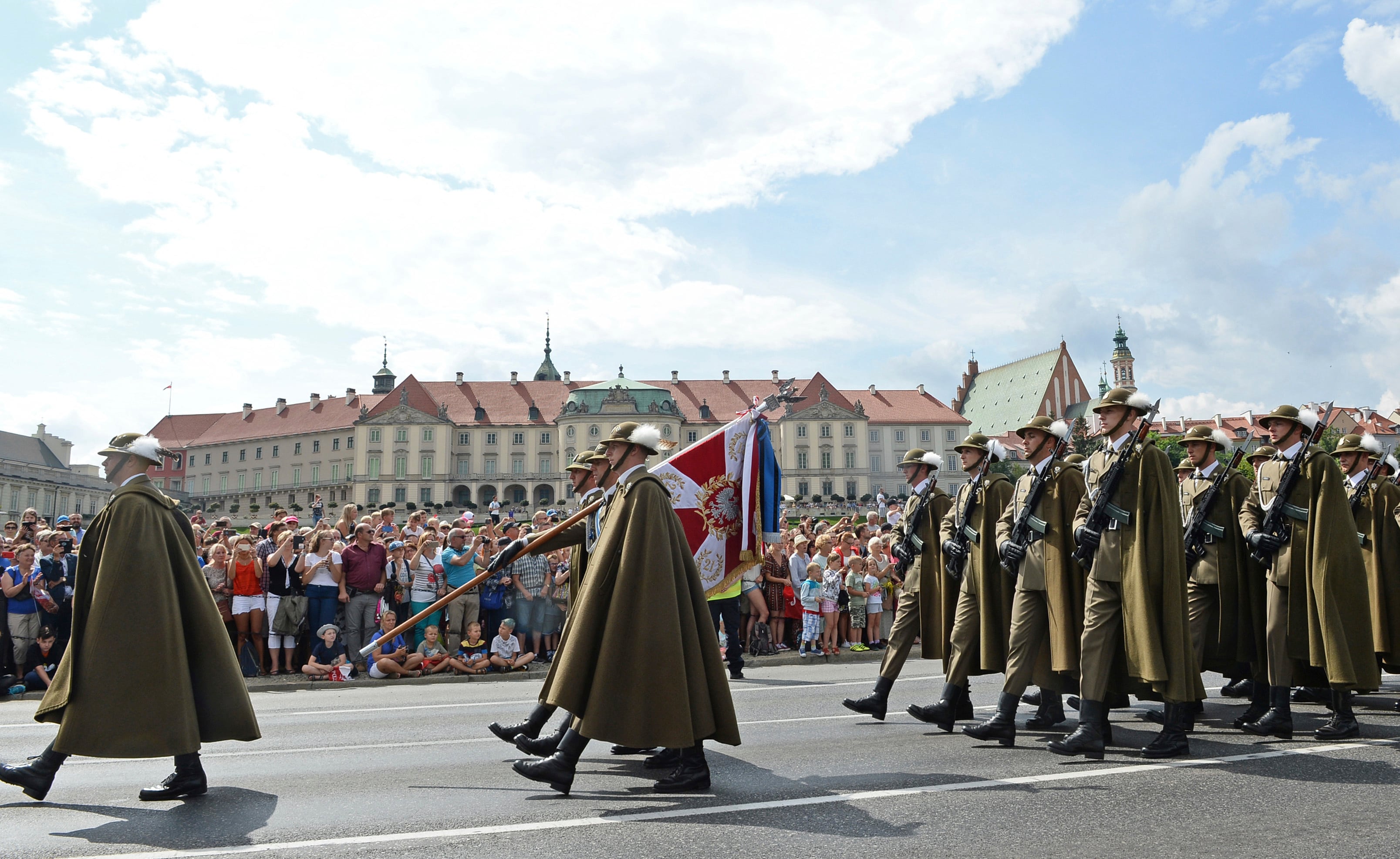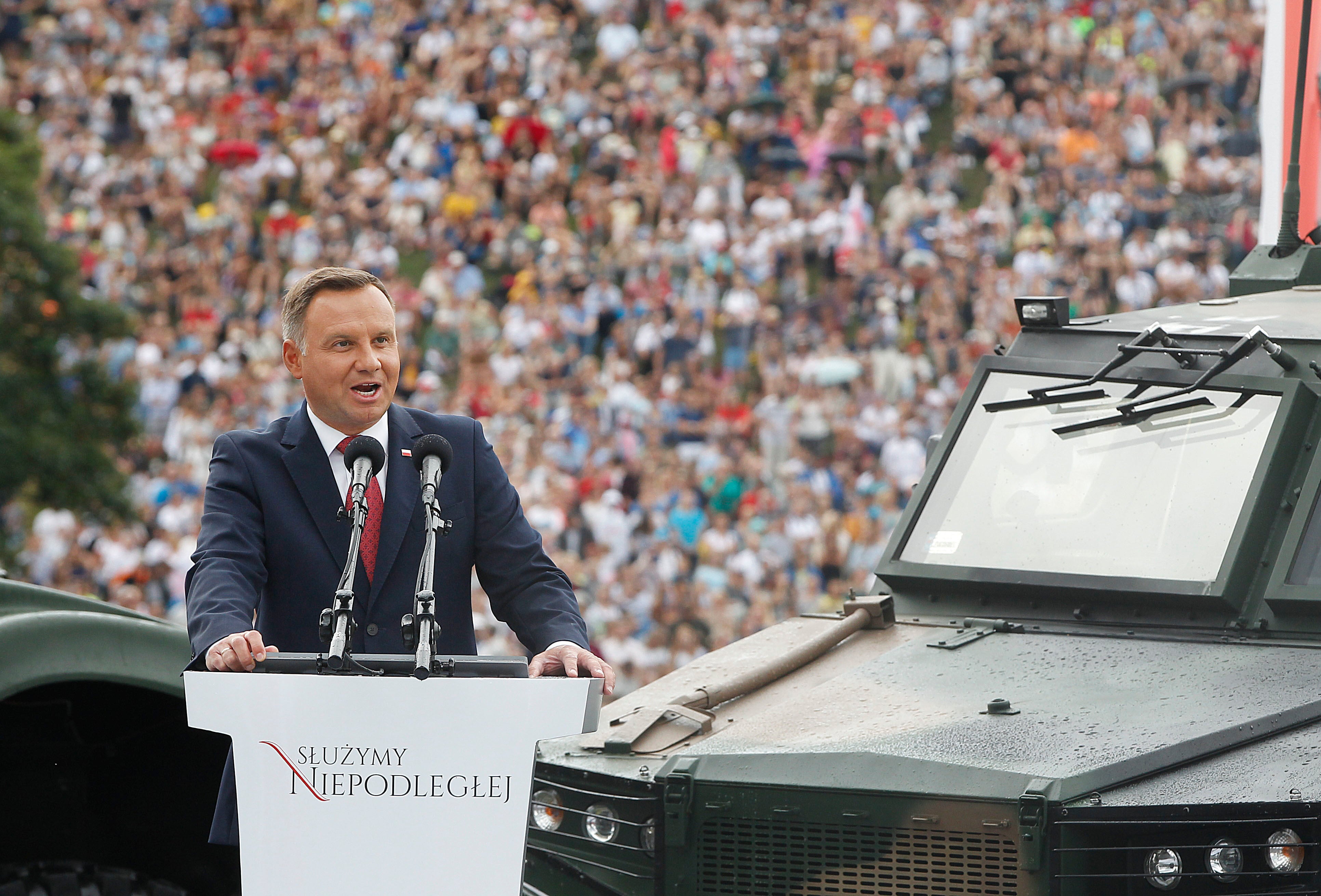WARSAW, Poland — Poland’s president voiced hope for a permanent U.S. military presence in his country, in a speech as the nation put on a large military parade on its Armed Forces Day holiday Wednesday replete with tanks and people marching in historic uniforms.
Poland is fearful of Russia’s renewed aggression, and President Andrzej Duda said that a permanent presence by the U.S. Army would “scare away every potential attacker.”
The U.S. military, on its own and as part of a NATO effort, began rotating troops in and out of Poland and other nervous countries on NATO’s eastern flank, including Lithuania, Latvia and Estonia, after Russia’s annexation of the Crimean Peninsula from Ukraine in 2014.

Poland has recently been lobbying for a permanent U.S. base and more American forces. There hasn't yet been a response on whether Washington will agree to a move that would be expensive and sure to infuriate Moscow.
Some of the American troops currently in Poland also marched in the parade, U.S. flags held high. Poland considers the U.S. its key protector, with some doubts about whether Europe's NATO members really would ever come to its defense.

Duda said if the economy allows, he also wants Poland to increase its own defense spending to 2.5 percent of GDP, above the current 2 percent NATO target, which Poland already meets.
The parade is part of a national holiday observed every Aug. 15 that celebrates Poland's defeat of Russian Bolsheviks in 1920 near Warsaw — celebrated as a near-miraculous victory for a country that has seen more than its share of defeat and occupation in past centuries.
"We won. Yes, we won. We Poles won," Duda said. "Today we look with pride at those times."

This year's event was especially large and colorful to mark the centenary of Poland regaining its independence in 1918 after having been swallowed up for 123 years by Russia, Prussia and the Austro-Hungarian Empire.
There was a show of military might by the armed forces, while hundreds of members of historical reconstruction groups also paraded in historic uniforms, including from the Middle Ages, the Napoleonic era and the 20th century.





